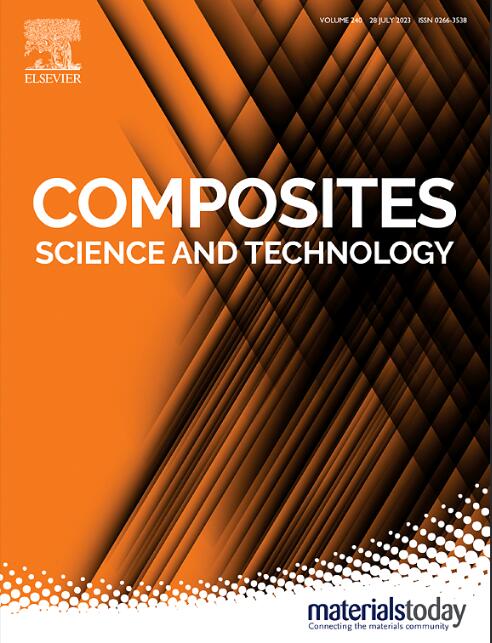Ultralight, flexible, and breathable Bi-modified W18O49/MWCNTs/PAN hybrid nanofiber membrane for NIR/VIS/UV/X-ray broadband electromagnetic shielding
IF 8.3
1区 材料科学
Q1 MATERIALS SCIENCE, COMPOSITES
引用次数: 0
Abstract
Human activities, ranging from medical applications to space exploration, face significant threats from multiband electromagnetic radiation. This challenge is particularly pronounced in the complex radiation environments of space. There is an urgent need for high-efficiency, stable broadband electromagnetic shielding materials to safeguard human health and equipment safety. Herein, a Bi-modified W18O49/MWCNTs/PAN hybrid nanofiber membrane is successfully prepared by electrospinning and post-treatment. Relying on the synergistic effect of Bi, W18O49, MWCNTs, and porous structures, excellent broadband radiation protection capability is achieved: (i) Low near-infrared-visible-light (NIR-VIS) transmittance (0.62 %); (ii) Ultraviolet (UV) transmittance of only 0.012 % and UPF value as high as 2000; (iii) Mass attenuation coefficient up to 16.18 cm2 g−1 and attenuation ratio of 85.74 % (thickness: 4 mm) at 33 keV X-ray energy. Furthermore, porous structure and high specific surface area give the membrane ultralight density (0.36 g cm−3), flexibility, and outstanding air permeability (8.5 kg m−2 d−1). Even after 2000 bends, it still maintains stable structure and performance. Meanwhile, low thermal conductivity (42.2 mW m−1 K−1) and superior temperature resistance (300 °C) enable it to adapt to complex and changing environments. These advantages make the membrane highly promising for radiation protection in medical, industrial, and aerospace applications.

用于近红外/可见/紫外/ x射线宽带电磁屏蔽的bi改性W18O49/MWCNTs/PAN杂化纳米纤维膜
人类活动,从医疗应用到空间探索,都面临着多波段电磁辐射的重大威胁。这一挑战在复杂的空间辐射环境中尤为明显。为了保障人体健康和设备安全,迫切需要高效、稳定的宽带电磁屏蔽材料。通过静电纺丝和后处理,成功制备了bi修饰的W18O49/MWCNTs/PAN杂化纳米纤维膜。依托Bi、W18O49、MWCNTs和多孔结构的协同作用,实现了优异的宽带辐射防护能力:(1)近红外-可见光(NIR-VIS)透过率低(0.62%);(ii)紫外线(UV)透过率仅为0.012%,UPF值高达2000;(iii)在33 keV x射线能量下,质量衰减系数高达16.18 cm2 g−1,衰减比为85.74%(厚度为4 mm)。此外,多孔结构和高比表面积使膜具有超轻密度(0.36 g cm−3)、柔韧性和出色的透气性(8.5 kg m−2 d−1)。即使经过2000次弯折,它仍然保持稳定的结构和性能。同时,低导热系数(42.2 mW m−1 K−1)和优异的耐温性(300°C)使其能够适应复杂多变的环境。这些优点使薄膜在医疗、工业和航空航天应用中具有很高的辐射防护前景。
本文章由计算机程序翻译,如有差异,请以英文原文为准。
求助全文
约1分钟内获得全文
求助全文
来源期刊

Composites Science and Technology
工程技术-材料科学:复合
CiteScore
16.20
自引率
9.90%
发文量
611
审稿时长
33 days
期刊介绍:
Composites Science and Technology publishes refereed original articles on the fundamental and applied science of engineering composites. The focus of this journal is on polymeric matrix composites with reinforcements/fillers ranging from nano- to macro-scale. CSTE encourages manuscripts reporting unique, innovative contributions to the physics, chemistry, materials science and applied mechanics aspects of advanced composites.
Besides traditional fiber reinforced composites, novel composites with significant potential for engineering applications are encouraged.
 求助内容:
求助内容: 应助结果提醒方式:
应助结果提醒方式:


